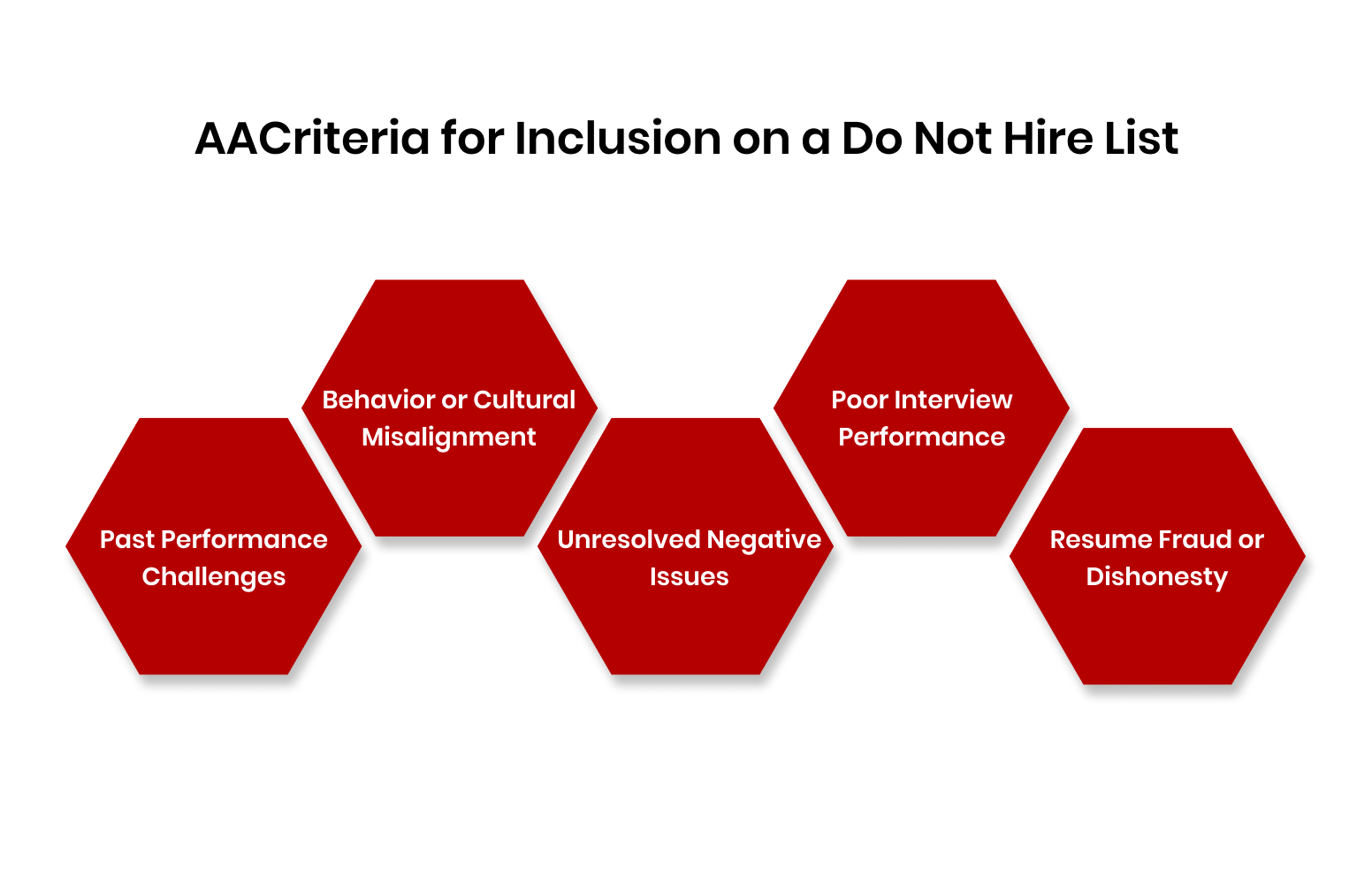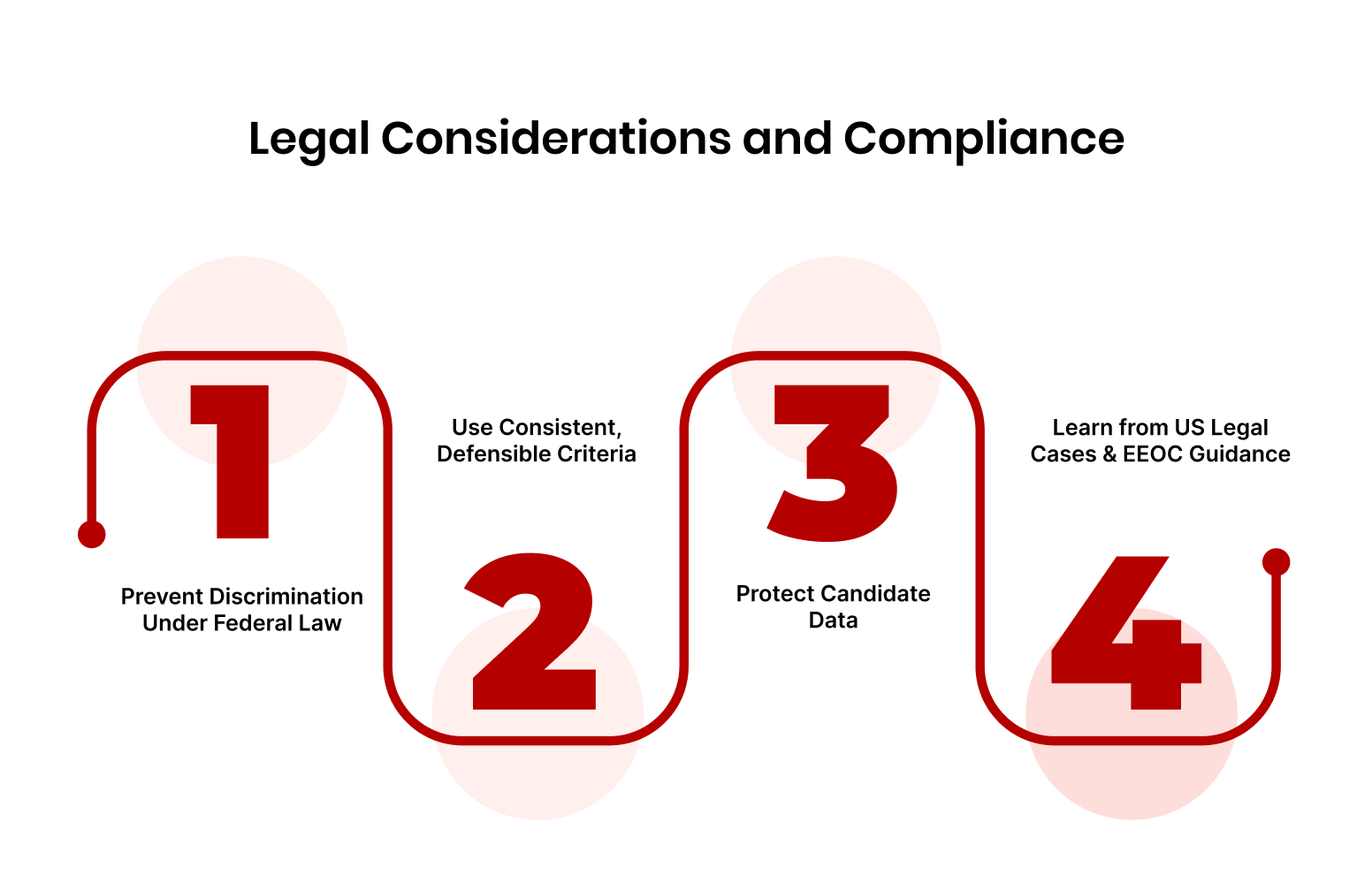You know the feeling — as a hiring manager, of juggling multiple open roles and hitting a wall when candidates end up on a do-not-hire list. It’s frustrating, time-consuming, and puts your reputation on the line.
According to Fortune, major companies actively use internal blacklists, sometimes even shared across HR departments. And it’s getting more common than you might think.
The intent here is simple: reduce risk.
But when poorly managed, these lists can open up a different set of risks, such as legal exposure, accusations of bias, or compliance gaps, adding a layer of complexity.
So, how do you track these candidates fairly? How do you ensure that you’re not entering murky legal territory?
Let’s understand how do-not-hire lists work, why they matter, and how you can use them effectively and safely.
What Are Do Not Hire Lists?
A Do Not Hire list is precisely what it sounds like: a record of candidates who shouldn’t be considered for future roles.
But it’s more than just a blacklist.
These lists are often used to avoid candidates who have previously caused issues. They are a risk-reduction tool, helping recruitment teams protect client relationships and avoid repeat hiring mistakes.
AACriteria for Inclusion on a Do Not Hire List

Building a trusted shortlist is tough.
Therefore, know what gets someone on a Do Not Hire list and avoid costly missteps that can damage your reputation or client trust.
Let’s break down the usual suspects.
1. Performance Issues in Previous Roles
- Missed deadlines, poor code quality, or repeated escalations signal deeper skill gaps.
- If feedback from past contracts consistently mentions underperformance, that’s a red flag.
- Metrics like low productivity or QA failure rates often back up these concerns.
2. Behavioral Problems or Cultural Misfit
- Talent might tick all the skill boxes but clash with team dynamics.
- Frequent complaints about attitude, unprofessional communication, or poor collaboration matter.
- Disengagement during contract periods often signals a mismatch beyond just skills.
Soft skills like communication and adaptability are critical for team success. Candidates lacking these can disrupt team dynamics. Read more about the importance of soft skills in the hiring process to ensure you’re assessing candidates holistically.
3. Past Negative References or Unresolved Issues
- Hiring managers remember contractors who left projects mid-way or created friction.
- Unresolved disputes, especially around compliance or payment, can land someone on the list fast.
- Consistent negative references can outweigh a glowing resume.
4. Poor Interview Performance
- Lack of preparation or company knowledge shows disinterest and disrespect.
- Inability to communicate clearly, respond to questions effectively
- Struggling to connect with the interviewer, flags a poor fit, especially for client-facing or collaborative roles.
5. Resume Fraud or Dishonesty
- Falsified job titles, inflated responsibilities, fake credentials, or misleading timelines can quickly disqualify someone.
- Hiring teams often verify key claims. Dishonesty, intentional or not, erodes trust instantly.
This is where Consultadd steps in, streamlining your hiring process by providing pre-screened, qualified candidates, reducing sourcing time and minimizing risks.
Legal Considerations and Compliance

Managing Do Not Hire lists requires strict legal obligations for staffing agencies.
1. Avoid Discrimination under Federal Law
- Title VII of the Civil Rights Act prohibits discrimination based on race, color, sex, religion, or national origin.
- The Americans with Disabilities Act forbids exclusion based on disability.
- Ensure every Do Not Hire decision is backed by documented, job-related facts not personal bias.
2. Apply Consistent and Defensible Criteria
- Use clear, uniform standards for all candidates, regardless of background.
- Maintain written records explaining why candidates are listed.
- Review your criteria regularly to stay aligned with EEOC guidelines and evolving laws.
3. Protect Candidate Privacy and Data Security
- Comply with state and federal data protection laws
- Limit list access to authorized hiring personnel only.
- When conducting background checks, provide candidates with required disclosures and rights.
4. Learn from US Legal Cases and EEOC Guidance
- Courts have ruled against employers who failed to give candidates a chance to respond to negative information.
- Secretive or inconsistent blacklist use can trigger discrimination claims or regulatory fines.
- Keep up-to-date with EEOC enforcement trends and court rulings to mitigate risks.
Following these legal guardrails can protect your agency, clients, and candidates while building a fair, trustworthy hiring process.
Therefore, when managing Do Not Hire lists effectively, it's essential to keep the process efficient and avoid unnecessary mistakes.
Let’s explore practical tips for managing Do Not Hire lists to ensure fairness and accuracy.
Maintaining Fairness and Transparency
Fairness and transparency aren’t just ideals; they’re the foundation of trusted hiring partnerships. Agencies that establish clear processes reduce risk and build stronger relationships with clients and candidates.
Here’s how to make fairness and transparency work in your hiring operations:
Implementing these techniques turns fairness and transparency from vague goals into everyday realities.
It empowers your teams to make confident, consistent hiring choices that protect all.
Tips for Staffing Agencies on Managing Do Not Hire Lists
Managing Do Not Hire lists is a delicate balancing act that must protect clients and companies while allowing room for growth and second chances. These lists can serve a valuable purpose, but only when managed with fairness and transparency.
People grow and change, and hiring practices should reflect that evolution, offering opportunities based on merit and current potential, not just past perceptions.
Therefore, here’s how to keep them practical and effective:
1. Document Every Entry
- Note the clear reasons for adding candidates
- Keep records handy for audits or disputes
2. Define Clear Criteria
- Use simple, consistent rules for inclusion
- Share the criteria with your team to ensure fairness
3. Review & Clean Regularly
- Audit lists every 3-6 months
- Remove outdated or incorrect entries
4. Train Recruiters & Managers
- Conduct refresher sessions on legal and ethical use
- Encourage questions and discussion around best practices
5. Communicate Transparently
- Explain your Do Not Hire process to clients
- Clarify how decisions impact hiring timelines
6. Leverage Technology
- Use ATS or software to track and update lists
- Set alerts for review dates and expirations
7. Allow for Reconsideration
- Have a straightforward appeal process for candidates
- Review new info before final decisions
With these steps, you’ll keep your Do Not Hire lists fair, efficient, and reliable.
Therefore, partnering with the right IT staffing agency ensures effective management of Do Not Hire lists. Learn how to choose the right IT staffing agency for your business for smoother, compliant hiring practices.
Conclusion: Key Lessons on Do Not Hire Lists
A poorly managed Do Not Hire list can quietly sabotage your agency’s credibility. But a well-handled one? It becomes your secret weapon, strengthening client trust, protecting your brand, and building a culture of fairness.
Throughout this guide, we’ve broken down how to bring clarity, accountability, and compassion into every hiring decision. When your agency has strong guidelines, routine audits, and space for candidate growth, the result is consistency without compromising humanity.
That’s where Consultadd comes in. For 14+ years, we’ve helped agencies like yours transform hiring from reactive to resilient.
Here’s how:
- Safe, reliable hires: Screened candidates who are ready to perform from day one.
- Lower turnover risks: You get professionals who are committed, not just available.
- Seamless compliance: We handle visa, documentation, and regulatory details—so you stay focused.
- Continuous support: Post-placement success is our priority, not just placement speed.
We’re backed by efforts and results:
- 1:1 dedicated account managers
- Top 100 candidates placed in the last year
- ~65 staffing companies partnered with us in just 12 months
- MSAs signed with leaders like Robert Half and Teksystems
- 5K+ successful staffing engagements
- Talent sourced in under 24 hours
- Ready-to-deploy professionals from trusted university pipelines
Build a hiring process grounded in fairness, insight, and accountability with Consultadd.
Connect with us to strengthen your workforce and uphold a reputation for integrity and smart decision-making.

